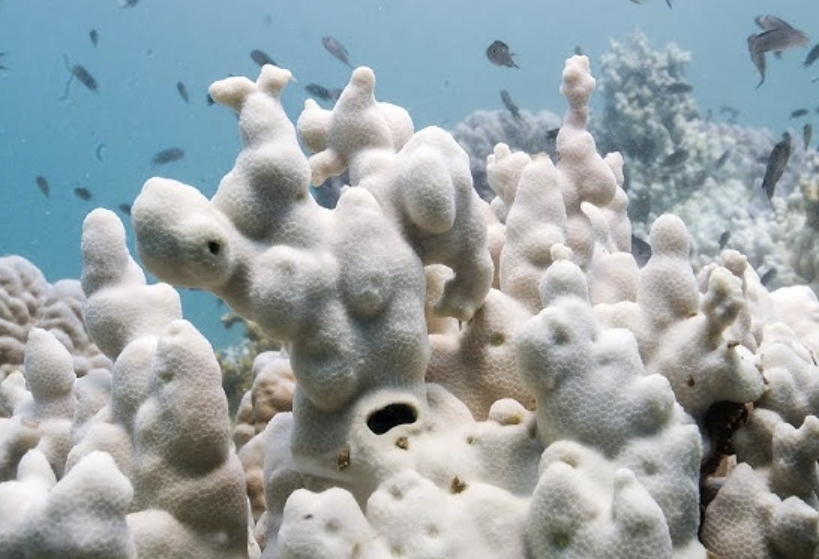What is fourth global coral bleaching event (GCBE4)?
The fourth global coral bleaching event (GCBE4) began in January 2023. It is the most extensive and rapid coral bleaching event recorded. According to National Oceanic and Atmospheric Administration (NOAA), 99.9% of coral reefs in the Atlantic Ocean have experienced heat stress. This event has surpassed previous bleaching events from 2014 to 2017 by over 11%.
Comparison with Previous Events
The current event has unfolded in less time than GCBE3, which lasted three years and affected 65.7% of coral reefs. GCBE4 has impacted at least 77% of global reef areas in just 20 months. This rapid increase in bleaching is alarming and unprecedented.
Current Impact and Regional Examples
Reports confirm mass coral bleaching in 74 countries since February 2023. Regions like Palau, Guam, and Israel have documented bleaching. The Caribbean and South China Sea continue to experience high heat stress levels.
Climate Patterns and Their Influence
Strong El Niño events often lead to severe bleaching. However, recent events have shown that bleaching can also occur during La Niña phases. This indicates a shift in ocean temperatures, making reefs vulnerable regardless of the ENSO phase.
Extent of Heat Stress
The overwhelming majority of coral reefs in the Atlantic have faced bleaching-level heat stress. This extreme heat has persisted for nearly two years in some Caribbean areas. The situation is dire, with many corals experiencing ongoing thermal stress.
Future Assessments and Delayed Impact
The full impact of GCBE4 may take years to understand. Scientists need to conduct extensive in-water monitoring and field assessments. These evaluations usually happen months after the bleaching event subsides.
Coral Mortality Timeline
Coral mortality can begin rapidly during marine heatwaves. Sensitive species may die within days to weeks. However, the complete consequences of bleaching often unfold over one to two years. Corals may become immunocompromised and more susceptible to disease after heat stress.
Historical Context of Coral Mortality
During the 2005 bleaching event in the US Virgin Islands, many corals initially survived but later succumbed to diseases. This led to an important decline in coral cover. Current studies from the Mexican Pacific indicate mortality rates of 50-93% in certain regions.
Call for Action
In light of this extensive coral bleaching, scientists and the UN are advocating for an emergency session on coral reefs. This will take place during the Convention on Biological Diversity summit (COP16) in Cali, Colombia. The urgency reflects the need for immediate action to address the crisis facing coral ecosystems worldwide.
Month: Current Affairs - October, 2024
Category: Environment Current Affairs







